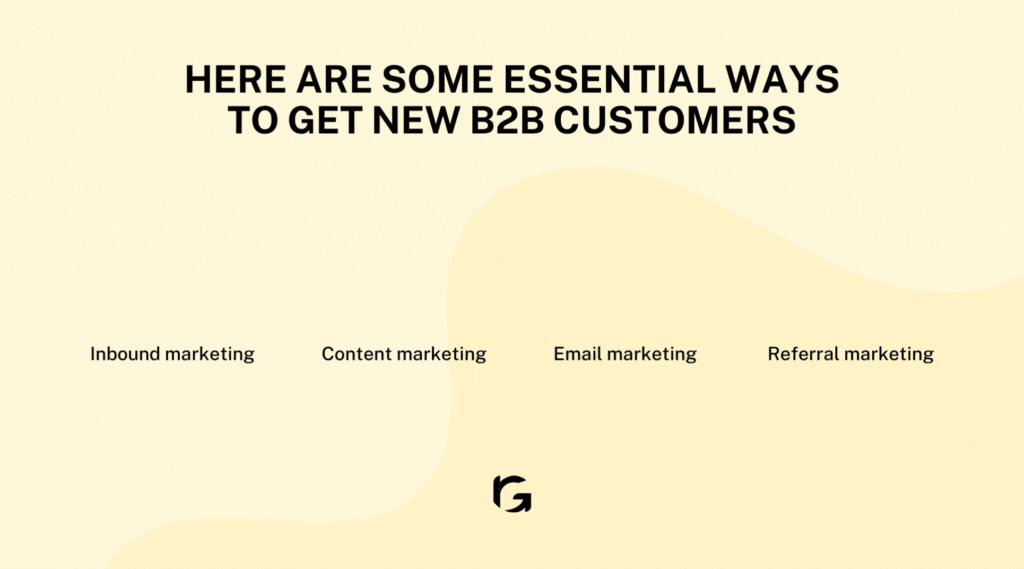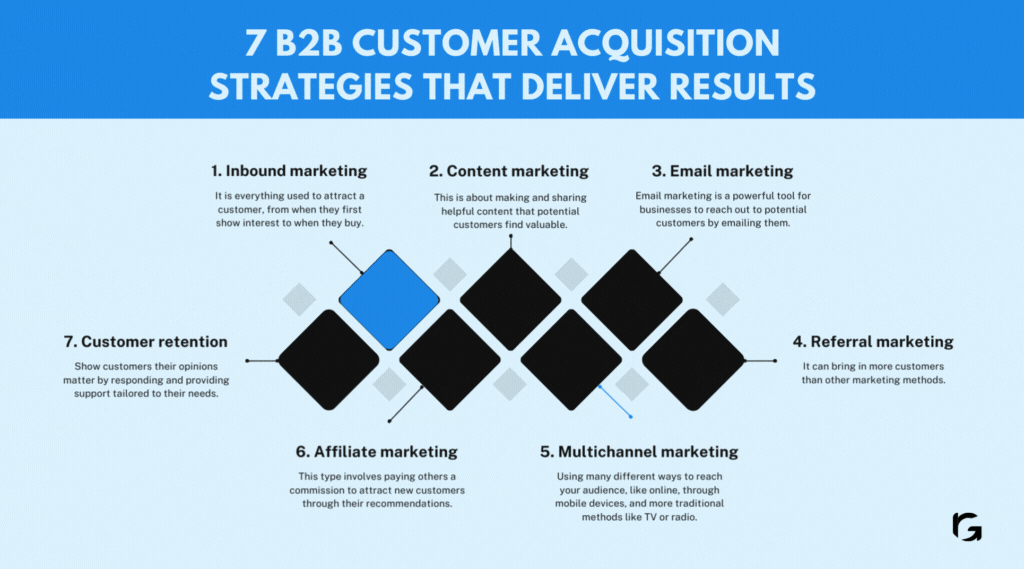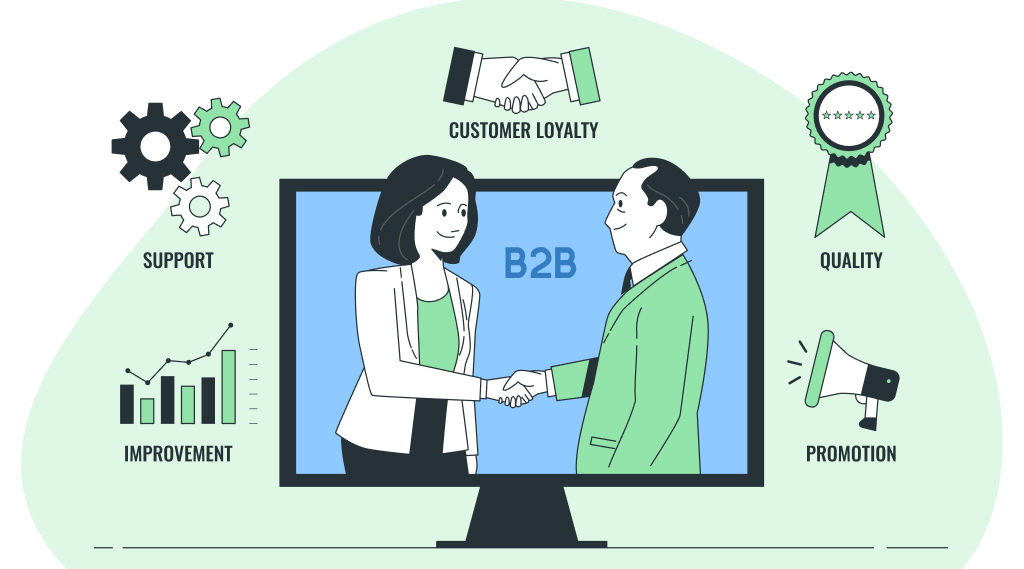Introduction
B2B SaaS companies will face some challenges and see opportunities when it comes to getting new customers. A key point to note is the customer acquisition cost (CAC) payback period, which has grown to a median of 17 months. This means it now takes about 17 months for companies to get back the money they spend on getting a new customer, which is longer than last year’s 16 months.
B2B customer acquisition strategies mainly involve increasing brand awareness and using different methods to attract, educate, and convert new customers. This also includes keeping the customers they already have. SaaS businesses can use various marketing tools and channels, such as inbound marketing, search engine optimization (SEO), and email marketing, to effectively reach potential customers and educate them throughout the entire sales process.
It’s important to understand that marketing alone differs from gaining customers, which we’ll discuss later in this blog.
Understanding B2B customer acquisition
Getting new business-to-business (B2B) customers is mainly about showing potential clients how your company can help them solve their problems through an excellent customer-getting plan.
In B2B, things like longer selling times and higher prices are available daily, and unique marketing methods are needed to reach the people you want to sell to effectively. To succeed, your B2B customer-getting strategies aim to make more people know your brand and use ways to attract, teach, and turn new customers into buyers while keeping the ones you already have.
Here are some essential ways to get new B2B customers:

- Inbound marketing
- Content marketing
- Email marketing
- Referral marketing
These methods use educational and marketing materials to help raise awareness, spark interest, and ultimately turn potential customers into loyal buyers.
It’s essential to understand the details of the B2B field and how getting customers in B2B differs from business-to-consumer (B2C) strategies. This understanding is critical to creating an excellent plan to reach customers.
Why is B2B customer acquisition important?
Let’s discuss the four most important factors for B2B customer acquisition:
- Revenue growth and sustainability
- Diversification and risk mitigation
- Innovation and adaptability
- Enhanced brand visibility and recognition
1. Revenue growth and sustainability
The primary goal of any business is to generate revenue, and effective customer acquisition directly contributes to this objective. Acquiring new B2B clients ensures a continuous influx of revenue, promoting business sustainability and growth over the long term.
2. Diversification and risk mitigation
Relying on a limited number of clients or a single market can expose your business to risks. B2B customer acquisition allows companies to diversify their client base, reducing dependency on specific sectors or regions and mitigating potential risks associated with market fluctuations.
3. Innovation and adaptability
Engaging with new clients often leads to exposure to different industries and markets. This exposure promotes innovation and adaptability, as businesses must tailor their products or services to meet diverse clients’ unique needs and challenges.
4. Enhanced brand visibility and recognition
Successful customer acquisition efforts increase brand visibility and recognition within the industry. As more businesses become aware of their offerings, the brand becomes synonymous with expertise, reliability, and innovation, making it more appealing to potential clients.
7 B2B customer acquisition strategies that deliver results
When it comes to acquiring B2B customers, implementing effective strategies is crucial for success. Here are seven proven strategies that can help you attract and retain valuable B2B clients:

- Inbound marketing
- Content marketing
- Email marketing
- Referral marketing
- Multichannel marketing
- Affiliate marketing
- Customer retention
1. Inbound marketing
Inbound Marketing considers everything used to attract a customer, from when they first show interest to when they buy, ie, from Top-of-the-Funnel (ToFU) to Bottom-of-the-Funnel (BoFu).
For example, a small pop-up might appear if a website visitor keeps returning. This is just a tiny part of a bigger plan that initially got them to the website.
2. Content marketing
This is about making and sharing helpful content that potential customers find valuable. To do this well:
- Work with your team to understand your buyer personas.
- Create content for different platforms and types of media.
- Plan your marketing activities.
- Regularly check your content and update it as needed.
3. Email marketing
Email marketing is a powerful tool for businesses to reach out to potential customers by emailing them. It’s very effective because it lands directly in their inboxes and offers a great return on investment, bringing back $36 for every dollar spent. Tools are available to help send emails based on user behavior, write better email subjects, and more.
4. Referral marketing
This encourages existing customers to tell others about your product, often offering them incentives like discounts or rewards. It works well because:
- It can bring in more customers than other marketing methods.
- Customers who join through referrals tend to be 18% more loyal.
- These customers are likely to continue referring others.
5. Multichannel marketing
This strategy involves using many different ways to reach your audience, like online, through mobile devices, and more traditional methods like TV or radio. The goal is to interact with potential customers in various ways to maintain a consistent brand experience wherever they find you.
6. Affiliate marketing
This type involves paying others a commission to attract new customers through their recommendations.
Currently, affiliate marketing remains underutilized in the B2B sector:
- Just 18.6% of affiliate marketers operate within the B2B domain.
- A mere 12% of affiliate marketers promote B2B products, while only 6% focus on B2B services.
Although it’s not widely used in business-to-business settings, focusing on choosing the right affiliates and continuously engaging with them can make this strategy effective.
7. Customer retention
For businesses that sell subscriptions, keeping customers is crucial. It costs more to get new customers than to keep existing ones. Increasing customer retention by a small percentage can boost revenue. Furthermore, research indicates that boosting customer retention rates by just 5% can enhance total revenue by between 25% and 95%.
To retain customers:
- Use surveys to understand their opinions.
- Categorize feedback based on different customer groups.
- Act quickly on feedback.
- Monitor how customers use your product and address any issues.
- Understand why customers leave and try to prevent it.
- Show customers their opinions matter by responding and providing support tailored to their needs.
Wrap up
Getting new customers in the business-to-business (B2B) world takes a lot of work. Many of your potential clients already have suppliers they’re happy with, so breaking into the market can be difficult.
Plus, with the challenges brought on by the coronavirus pandemic—like the stop of face-to-face meetings and economic struggles—it’s even harder to reach new clients. But don’t worry; digital tools in the B2B area can help you meet new contacts and get leads. If you have a firm offer, are well-prepared, and use the right software, you’re on your way. The key to success is being able to connect with potential clients both professionally and emotionally.
Ready to outshine your competitors and boost your client base? Connect with us, your top-notch partner in B2B digital marketing!



